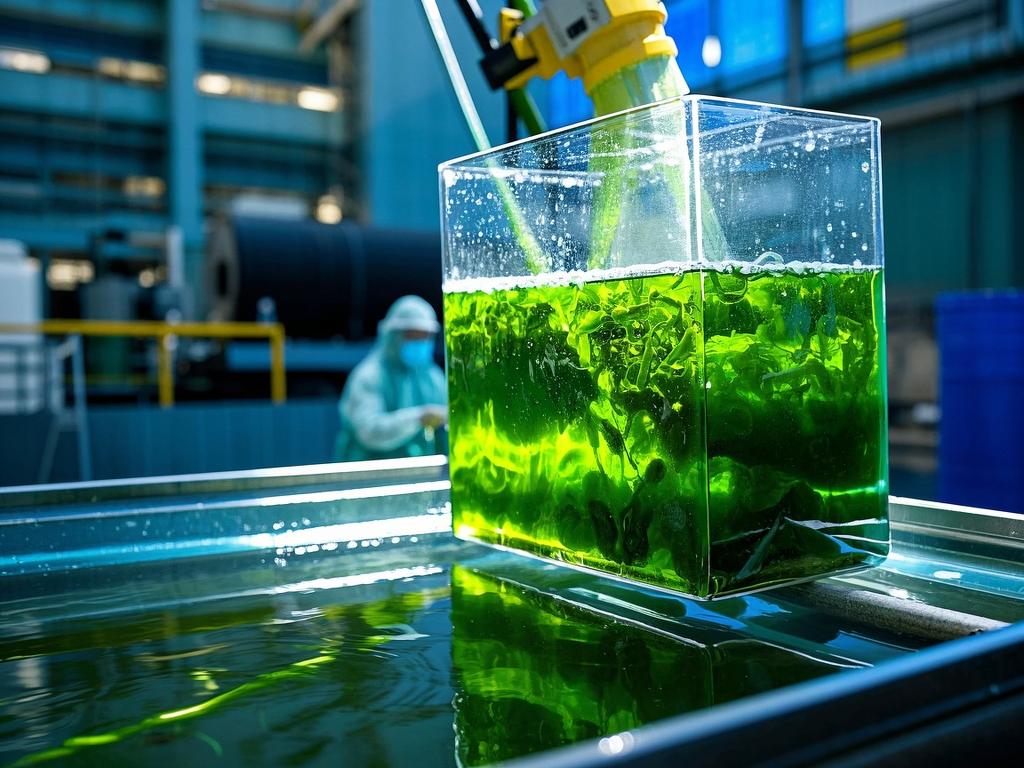
# Renewable Biofuels from Algae Cultivation: Scaling Up Sustainable Fuel Production
In the race against climate change and the depletion of fossil fuels, the search for sustainable energy sources has never been more crucial. One promising solution that has been gaining traction in recent years is the production of renewable biofuels from algae cultivation. Algae, those tiny but mighty organisms, hold the key to a greener and more energy-efficient future.
## The Algae Advantage
Algae are incredibly versatile and have several distinct advantages over traditional biofuel feedstocks. Firstly, they grow at an astonishing rate. Some species can double their biomass in just a few hours, which means we can produce a vast amount of fuel in a relatively short period. For example, certain strains of algae can increase their volume by 30% per day, compared to the meager growth rates of crops like corn or soybeans.
Secondly, algae require minimal land and water resources. They can be cultivated in ponds, bioreactors, or even wastewater treatment facilities, making them ideal for regions with limited arable land or water scarcity. In fact, algae can produce up to 100 times more oil per acre than conventional oilseed crops. This efficiency in resource utilization makes algae a truly sustainable option.
Moreover, algae can absorb large amounts of carbon dioxide during their growth process. By capturing this greenhouse gas, they help mitigate climate change while producing biofuels. It's like killing two birds with one stone! A single acre of algae can absorb as much carbon dioxide as 100 acres of forest, according to some estimates.
## The Algae Biofuel Production Process
The process of producing biofuels from algae involves several steps. First, the algae are grown in a nutrient-rich medium, which can be a combination of water, sunlight, and essential nutrients like nitrogen and phosphorus. Once the algae reach the desired biomass density, they are harvested.
There are various methods for harvesting algae, including centrifugation, filtration, and flocculation. After harvesting, the algae are then processed to extract the lipids, which are the raw material for biofuel production. This can be done through techniques such as solvent extraction or mechanical pressing.
The extracted lipids are then converted into biofuels, such as biodiesel or bioethanol. The conversion process typically involves chemical reactions that break down the lipids into their component parts and then recombine them into the desired fuel. For example, in the case of biodiesel production, the lipids are reacted with an alcohol in the presence of a catalyst to form fatty acid methyl esters, which are the main component of biodiesel.
## Scaling Up the Challenge
While the potential of algae biofuels is undeniable, there are still significant challenges to overcome in scaling up production. One of the main hurdles is the high cost of cultivation and processing. Currently, the cost of producing algae biofuels is several times higher than that of traditional fossil fuels. This is due to factors such as the need for specialized equipment, high nutrient costs, and inefficient harvesting and processing methods.
Another challenge is the development of reliable and cost-effective harvesting and processing technologies. Many of the current methods are either too expensive or not efficient enough to be used on a large scale. Scientists and engineers are working hard to develop new technologies that can reduce costs and increase productivity.
In addition, there are regulatory and policy issues that need to be addressed. The biofuel industry is still relatively new, and there is a lack of clear regulations and standards in many countries. This can make it difficult for companies to invest in algae biofuel production and for consumers to trust the quality and sustainability of these fuels.
## The Road Ahead
Despite these challenges, the future of algae biofuels looks bright. As research and development efforts continue, we are likely to see significant improvements in the efficiency and cost-effectiveness of algae cultivation and processing. New technologies are being developed all the time, and some are already showing promising results.
For example, some companies are exploring the use of genetic engineering to modify algae to make them more productive or easier to process. Others are developing innovative harvesting and processing methods that use less energy and produce less waste. These advancements could help bring down the cost of algae biofuels and make them more competitive with traditional fuels.
In addition, the growing demand for sustainable energy and the increasing awareness of climate change are likely to drive greater investment in algae biofuel research and development. Governments and businesses around the world are recognizing the potential of algae biofuels and are taking steps to support their development. For instance, some countries are offering subsidies or tax incentives to companies that produce algae biofuels, while others are investing in research projects to improve the technology.
## Engaging with the Readers
So, what do you think about the future of algae biofuels? Do you believe they have the potential to revolutionize the energy industry? Or do you have any concerns or questions about this technology? Let's start a conversation! Share your thoughts in the comments below and join the discussion on how we can make a more sustainable energy future a reality.
In conclusion, algae cultivation for renewable biofuels is an exciting and promising area of research and development. While there are still challenges to overcome, the potential benefits are too great to ignore. With continued innovation and investment, we could soon be powering our vehicles and homes with clean, sustainable algae biofuels. So, let's keep our eyes on this green energy frontier and see where it takes us!

